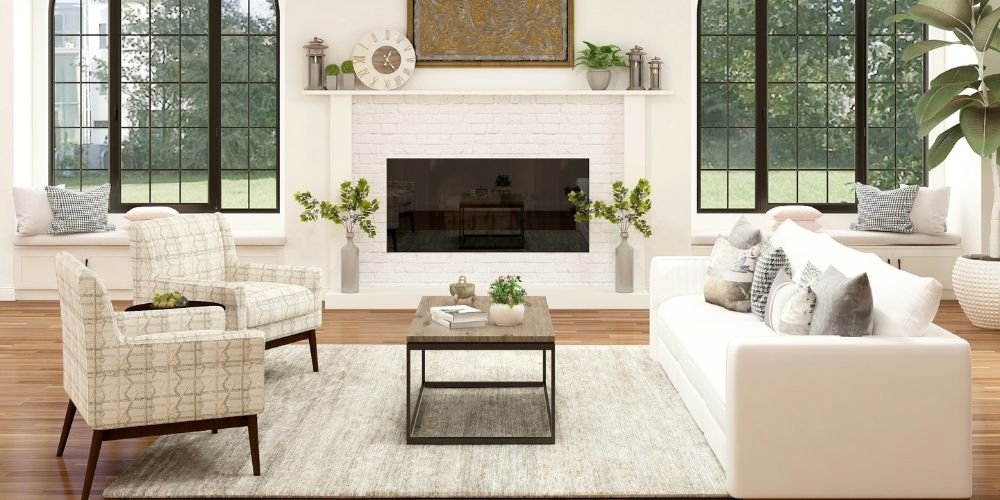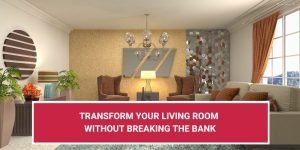Entering any place, the first thing that makes for our perception is the interior of the place. The interiors of the place decide for the impression the host wishes to make. From the colors that surround us, to the right amount of ventilation, to the textures and personalised feels a place hits you with– makes up for a huge difference.
In our years of experience in Designing Interiors for our Bangladeshi Clientele at Imagine Interiors, we have got a deeper understanding of the people’s psychology regarding their properties and interiors.Therefore, we have listed a few key factors that play a vital role in influencing one’s mood, in terms of the interiors designed of a particular place. Help yourself!
Some key Interior factors that affect the Mood

Colors Affect Your Mood!
Did you know that according to legitimate data sources, 90% of an initial impression can be attributed to colors alone! And mind you, it’s no superstition, rather psychology!
Color Psychology is a well-established field that explores the link between colors and emotions. Walking into a room painted a vibrant red might fire you up, while a calming blue can instantly make you feel more relaxed. Interior designers use this knowledge to create specific moods.
For example, a restaurant using warm yellows and oranges might aim to evoke a sense of energy and excitement, while a spa might use cooler tones and greens to create a tranquil atmosphere.
Spatial Flow and Organization:
Clutter bombards our senses and can be mentally draining. Therefore, you would have heard many interior designing firms mentioning about helping you out in maximising and utilising the given space in the best way possible– because it is one of the biggest assets to climb on to!
A well-organized space with a clear flow promotes feelings of calmness and control. This goes beyond just keeping things tidy. Strategic furniture placement can create designated areas for specific activities, avoiding visual clutter and allowing us to focus on the task at hand.
Lighting Design:

Lighting plays a crucial role in setting the mood. While you don’t want to create a “flashy” impact, ample ventilation is also important.
Natural light, like Sunlight is a powerful mood booster, increasing feelings of well-being and alertness. However, artificial light can be just as impactful. Dim, warm lighting can create a cozy and inviting atmosphere, while brighter, cooler lights can energize a space for work or activity.
Depending upon the ambience one wishes to create, for example office space would want to be more naturally ventilated, while bathroom interiors can go with artificial lighting.
Sensory Experience:
Interior design isn’t just about the visuals. It incorporates all of our senses.
Textures like plush carpets or soft throws can feel comforting, while natural materials like wood or stone can create a sense of grounding and connection to nature. Selection of the right Furniture, also adds up to creating the best interiors while designing a space.
Even scents, through candles or diffusers, can influence mood. For example, lavender is known for its relaxing properties, while citrus scents can be invigorating.
Personalisation and Biophilia:

Personal touch can make even the tiniest thing look enormously magical!
Surrounding ourselves with things we love can create a strong sense of comfort and belonging. Incorporating personal touches like artwork, photos, or beloved furniture pieces can make a space feel more inviting and reduce stress.
Additionally, biophilic design, which integrates elements of nature, has been shown to improve mood and cognitive function. Houseplants and natural materials not only add beauty but also connect us to the natural world, fostering feelings of well-being.
Conclusion
Now that you know the elements of interiors that can affect our moods, Imagine stepping into a haven – a space that wraps you in warmth and comfort, melting away your stress like sunshine on a winter’s day. This is the power of well-designed interiors. By carefully considering elements like furniture placement, color palettes, and clutter control, we can create such spaces that promote feelings of peace and holistic well-being.
Conversely, a chaotic or cluttered environment can feel like a constant assault on the senses. Disorganization and poor design choices can lead to frustration, anxiety, and even contribute to feelings of depression. Just like a cluttered workspace can make it difficult to focus, a cluttered home can make it hard to unwind.
In essence, our surroundings have a profound impact on our emotional state. By prioritizing thoughtful interior design, we can actually make our living spaces into havens that nurture our mental well-being.
We at Imagine Interiors constantly aim to upgrade our client’s interiors into such beautiful, comforting and wholesome new-like spaces, that they would cherish forever. You can give us a call right away and find out why we could bring out the best in your space!











